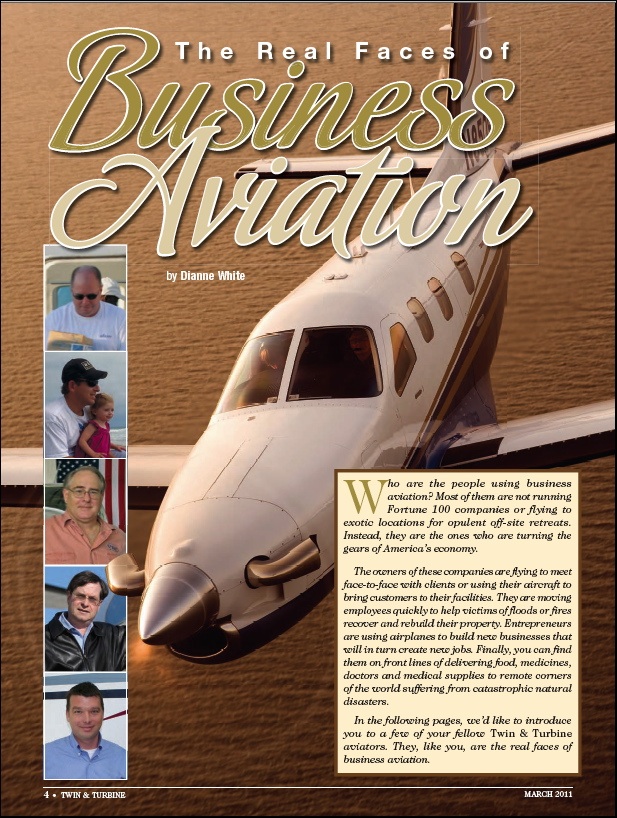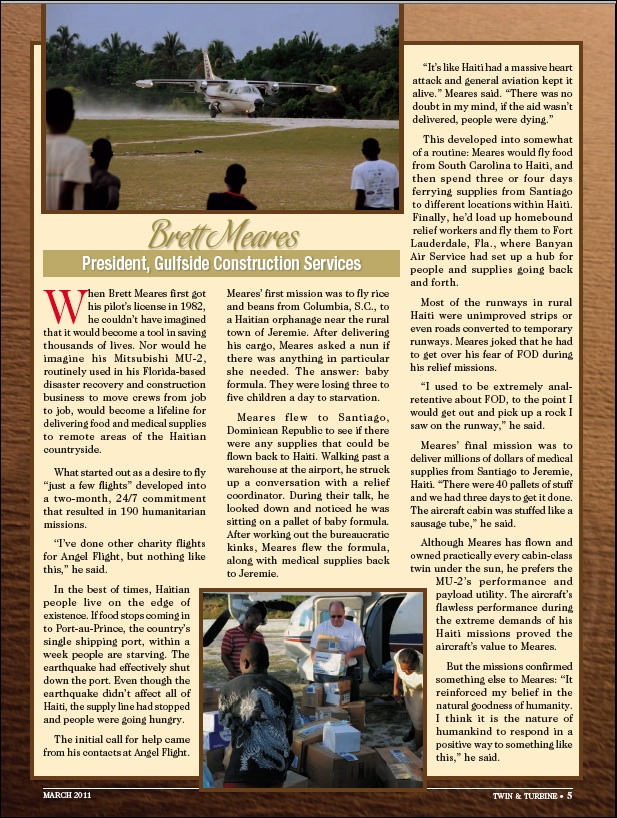It all started with photos and a plea for help being posted to the Cirrus Owners and Pilot’s Association (COPA) website by pilot and orthopedic surgeon Dr. Richard McLaughlin. His post was titled “Things I Need in Haiti Right Now”. He was one of the first pilots on the scene, arriving shortly after the earth stopped shaking. My wife Tracey and I read his accounts cried over the pictures and decided we had to go. Now. We arranged for our oldest daughter to watch over our youngest and headed for the airport with a loose plan and whatever flying data I could pull together.
We departed Southern California on a glorious winter morning and as I reached my cruising altitude of 17,000 feet I turned back over Los Angeles where we picked up an 100 knot tailwind. I thought it might be God’s way of saying “Hurry!”
We had filled the airplane with donated medical supplies and toys. One girl from our local high school donated her entire Beanie Baby collection to the injured children. We really didn’t have a plan other than to get to Nassau Bahamas and do whatever the missionaries required. Donations were flowing into distribution centers in Florida and Nassau but there weren’t enough airplanes to get the materials into the smaller rural airports in Haiti where the items were needed. We were assigned to the village of Les Cayes in southeastern Haiti. The tireless workers at the distribution center prioritized the donations. I think our first load was mostly syringes, bandages, and flashlights (and Beanie Babies).
The flying was tricky. We awoke each morning to a briefing and the most important information was which islands in the area had fuel. Our plan was to fly to Turks and Caicos to top off the tanks before continuing to Haiti and then return to T&C for more fuel, followed by a long overwater flight to a night landing in Nassau.
The landing in Les Cayes was surreal. We overflew the airport expecting bustling ground activity and airplanes competing for ramp space to unload. What we saw was a nearly abandoned airport with disco music playing on their radio frequency. After landing we taxied into the parking area and then the magic began. Small faces came out of the trees and pushed their startling thin arms through the chain link fence. Their voices had a Creole, melodic quality as they cried “food please, we need food”. We took a few minutes in the plane to compose ourselves and wipe away the tears. We unloaded the supplies nearly losing the entire load to a corrupt customs official. Once the supplies were in the right hands we approached the children at the fence. Anything we had in the airplane that could be spared we tossed to the waiting children while skeptical but grateful adults watched from a distance. Departing the island we felt both a sense of accomplishment and futility. How could one small plane load of stuff make a dent on the overwhelming suffering before our eyes? We decided that we had helped those few children at the fence to have a better day, that day, and that had to be enough. Hopefully there were more airplanes coming.
Testimony by Stuart McClay Smith, Malibu, CA
COPA member and pilot Cirrus SR22 G2 N205KT – January 2010
Hello Rick,
I’m glad there are people in this world like you that are willing to give back and actually help. This Haiti trip my father the owner of JP Miller & Sons, was an eye opener to say the least. We went to Haiti in March 2010 a few months after the devastating earthquake. The missionaries doing relief work for Samaritans Purse needed some immediate pest control relief. Through some connections in the Ft. Lauderdale area churches they new of our family business and asked for our help.
I and my father were more than happy to lend our expertise. My father had been to Haiti a few times before doing missionary work, but this was my first time. I will never forget that first day landing in Haiti. The first that that hit me was how many tents there were everywhere. It was literally like tent cities. The most profound thing I remember from the first day was seeing their Capitol building still in major ruins. We were able to work with local Haitians, train missionaries, and visit some local orphanages to help inspect their living quarters for any pest problems. The most dramatic thing I noticed was they way the children would immediately flock around us and want to hold your hand.
It truly was an earth shattering trip for me that I will never forget. I believe everyone should see what a third world is like, and in turn has a better world view.
Take care,
John Miller
– Written by: Dianne White , “The Real Faces of Business Aviation”
published in Twin & Turbine Magazine, March 2011

